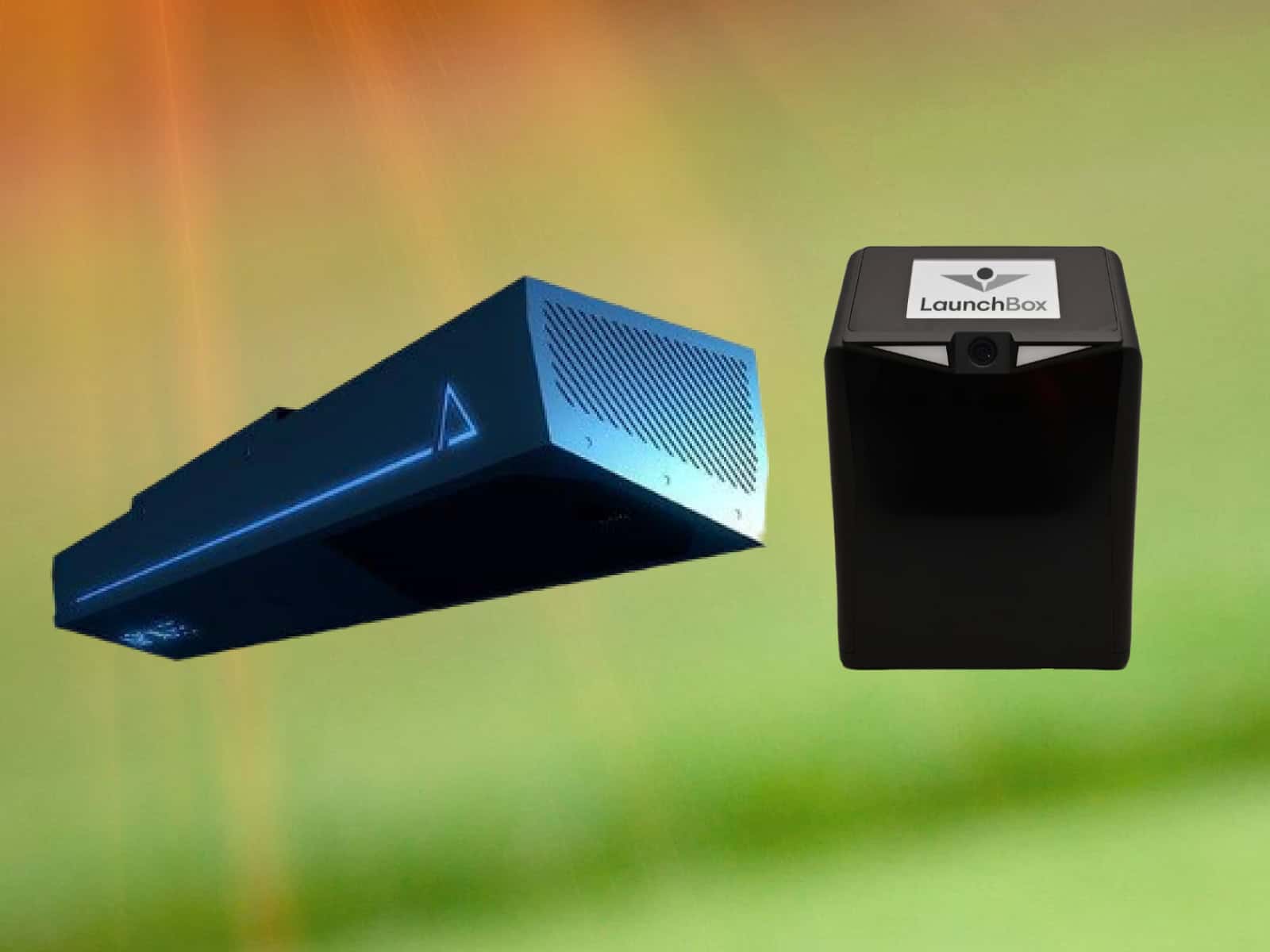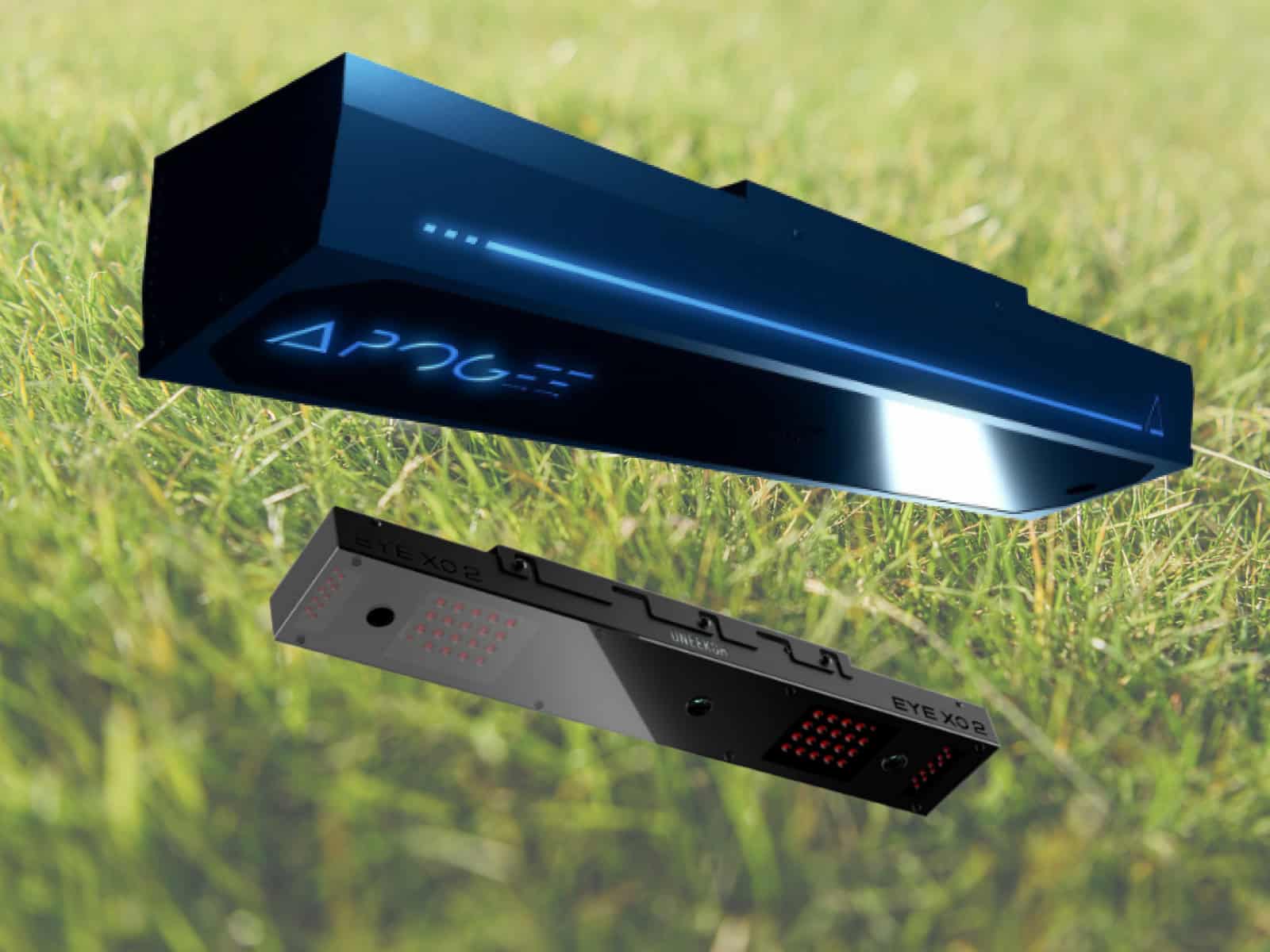Golf simulator flooring is a key component in building an immersive and functional at-home golf experience. The right surface plays several important roles in supporting accurate shot analysis and realistic practice conditions. When designing a personal golf simulator, choosing an optimal floor is one of the most critical decisions.
This article examines the purpose of specialized golf simulator flooring and provides an overview of the essential performance factors and features to evaluate.
Purpose of Golf Simulator Flooring
Golf simulator flooring needs to satisfy several sport-specific functions:
- Accurately replicate realistic ball behavior – The floor must allow for shots to closely mimic real-world golf dynamics. Factors like ball speed, bounce, roll and spin are measured by simulator sensors and software. An authentic surface is vital to the tracking and simulation of the game.
- Absorb clubhead impact – Repeated swing practice can subject floors to a lot of force. Surfaces must stand up to iron and driver strikes without compromising ball interactions. Some cushioning prevents damage to the club and/or injury.
- Provide smooth roll for putting – The subtle breaks and slopes of actual putting greens are difficult to produce at home. Still, some materials can enable straight, consistent ball roll speed to improve short-game skills.
Getting these elements right with purpose-built golf simulator flooring supports the full experience of driving ranges and courses in an indoor, virtual environment.
Factors to Consider
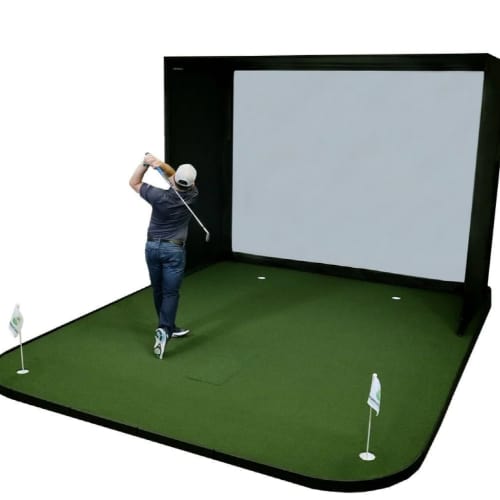
There are many key performance attributes and practical considerations that go into golf simulator floor selection:
Durability – With heavy use over time, materials need to resist wear, tear and deformation from club impacts without compromising playability.
Ball bounce & roll – Surfaces must let shots react true-to-life regarding speed, trajectory, spin and response. Proper constructions don’t inhibit ball movement.
Noise dampening – Some floor options can intensify loud, echoing vibrations from ball strikes and contact with clubs. That’s why choosing sound-absorbing underlayment is ideal.
Cost – Budget plays a role in flooring decisions. Full turf solutions are greater investments than basic mats, and long-term value is weighed with upfront expenses.
Ease of installation – As a homeowner, you need to account for how accessible or challenging a floor is to properly put in based on complexity, professional oversight required and readiness of the subfloor.
Aesthetics – Visual appeal might not directly impact performance, but you want your simulator space to have a clean, consistent and welcoming look.
Types of Golf Simulator Flooring
When building a home golf simulator, homeowners have a variety of flooring solutions to choose from. The surface material impacts factors like ball movement authenticity, durability, noise, and cost.
While basic foam mats are affordable, they may not fully replicate realistic course feel. Higher-end turf and turf-alternative constructions better support the full virtual golf experience.
Artificial Turf
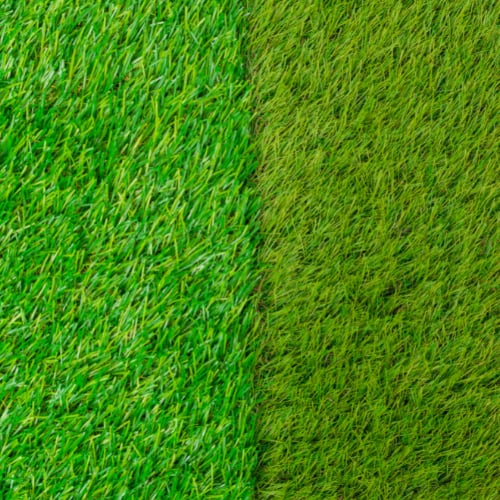
For the most authentic playing experience, artificial grass turf mimics the look and feel of golf course fairways and greens. The fiber blades stabilize shots and enable natural bounces and rolls. While more expensive, turf provides the most realistic visuals and playing dynamics, comes in different blade lengths and infill materials and needs some maintenance for optimal playability.
With proper underlayment, turf dampens the clubhead vibrations and sound. Premium turf materials are quite durable against regular swing practice.
Interlocking Rubber Tiles
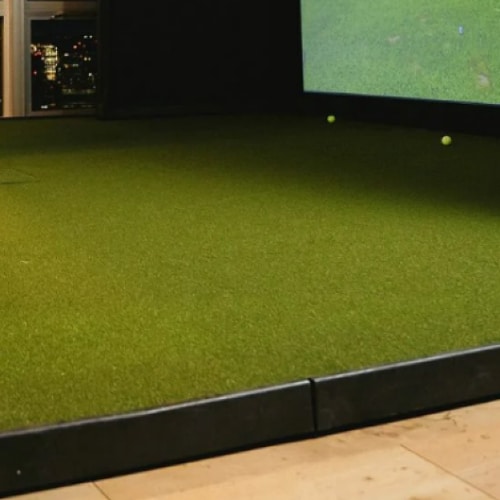
Interlocking rubber tiles make a solid, economic alternative to full artificial turf installations. The weather-resistant tiles feature various textures and colors to simulate grass.
Rubber tiles have a tough, long-lasting construction and an easy “click-together” DIY assembly. They also allow smooth ball roll and bounce and are available in large floor patterns and color options.
They are also highly functional and absorb impact, even though echoed acoustics may be louder than other surfaces. Routinely brushing debris maintains ideal play.
Low-Pile Commercial Carpet
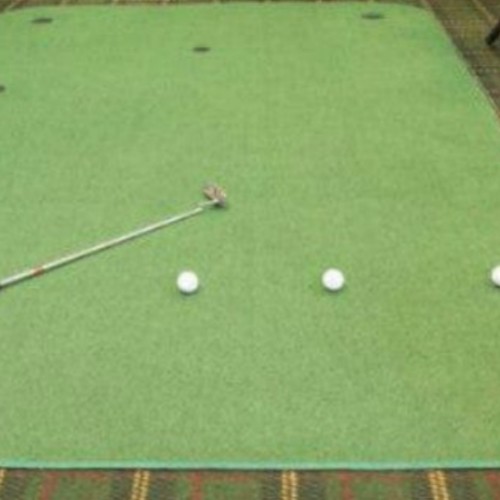
Some low-profile, high-density carpets are made specifically for golf use. While they constitute a budget-friendly choice, their limited pile height provides consistent ball response. Some properties of those carpets include the following:
- Cost-effective option between basic mats and turf
- Require less maintenance than other materials
- Available wider widths reduce seams
- Not as visibly realistic as turf alternatives
With quality cushioning and regular vacuuming, low-pile carpet endures frequent swing practice. Signature carpet options also help customize simulator rooms.
Additional Options
Along with the popular options explored above, other materials can also be used as golf sim flooring. Padded vinyl roll-outs, wooden plank floors or foam mats can also work, though ball movement accuracy may be less realistic than other purpose-made simulator surfaces. Durability is also lower.
Key Considerations for Installation
Once you choose the optimal golf simulator flooring for your needs and budget, proper installation is critical for ideal performance. Careful prep work, assembly and potential professional oversight influence the simulator’s functionality and lifespan.
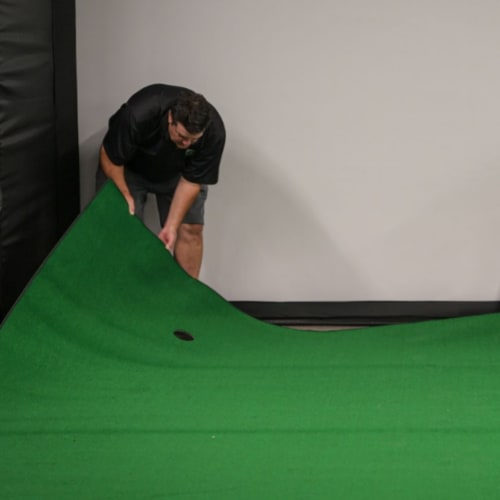
Room Dimensions
Start by carefully measuring the full simulator room space well in advance of ordering the materials. Account for the desired swing radius, display placement and other equipment.
While minimum lengths start around 7 feet deep by 10 feet wide, larger dimensions provide more realistic driver distances. Your room height should allow for full comfortable swings so as not to affect the mechanics and accuracy.
You can use a laser level to ensure the floor space is completely flat and even. After that, address any uneven spots on the subsurface.
Subfloor Prep
The subsurface under the floor covering strongly impacts the performance and results. Try to secure any creaking floorboards with additional screws to minimize vibrations. For concrete slabs, fill small holes and apply a sealant to create a smooth, protected foundation for your sim flooring.
Additional Base Layers
You may use other base layers to enhance the performance and acoustics of your flooring (and overall sim). Foam padding or felt underlayments help reduce ball bounce noise and vibration transmission to other rooms. In addition, rubber mats can provide extra durability over softer subsurfaces like concrete.
DIY vs Professional Installation
You also need to consider if you are qualified to go the DIY route and install your sim flooring yourself, or if you will need to hire a professional.
Basic snap-together tiles and mats allow easy DIY assembly, but full turf typically requires professional equipment and skills for optimal results.
Consider the pros and cons of hiring a contractor depending on the flooring choice, room specifics and your installation experience level.
Maintaining Your Golf Simulator Floor
After proper selection and installation, routinely caring for the simulator’s flooring helps sustain the best playing performance possible and extends its usable life. Basic upkeep best practices depend on the floor material.
Consistent cleaning removes debris, restoring smooth ball roll. Sanitization fights odor buildup and bacteria in reused infill. And monitoring high-traffic areas preserves safety and shot accuracy over many practice sessions.
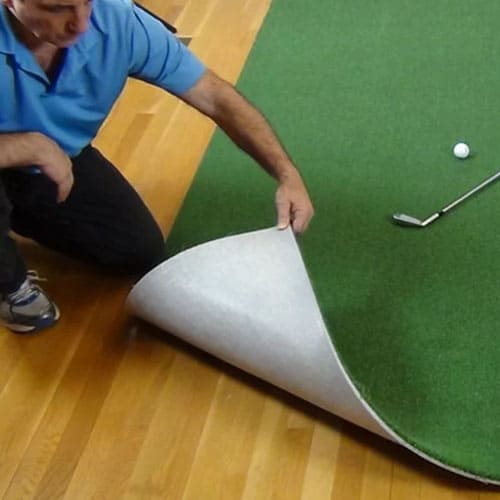
Regular Cleaning
Depending on your flooring type and material, the cleaning routine can be different:
For artificial turf, Use a stiff brush to actively lift and comb embedded fibers back into the proper position. Remove debris like infill pellets, grass clippings or leaves. You may also vacuum across all areas.
Interlocking rubber tiles should be frequently swept or vacuumed to extract built-up dirt and particles between ridges that may affect play. If needed, mop dirty spots using mild cleaner solutions.
With Commercial carpet, thoroughly vacuum high-use zones weekly or more often depending on foot traffic. Treat stains quickly before setting, as they may become very difficult or impossible to remove afterward.
Sanitization
Every few months, sprinkle turf cleaner solution on your artificial turf according to package directions to eliminate odors and disinfect the reused rubber infill. After that, rinse the turf thoroughly to remove any residue.
If you are using interlocking rubber tiles, for antimicrobial protection, wipe the tiles down with the recommended disinfectant concentrate mixed with water.
Infill Management
Infills are usually used with artificial turf. To maintain the infill, use a stiff nylon brush to freshen flattened fiber grains and redistribute evenly spread infill particles for consistent ball response. Add more infill if it’s depleted in high-contact areas.
Long-Term Care
On a regular basis, inspect the simulator flooring for signs of excessive wear, seam splitting or irregular bounce/roll. Use garage floor repair tape to quickly patch damaged turf. Replace worn sections as needed to restore the original playing characteristics.
Properly maintaining golf simulator floors ensures peak enjoyment for years to come. Consistent upkeep preserves functionality, aesthetics and equipment investments.
Frequently Asked Questions
To further help you understand the ins and outs of golf simulator flooring, we have compiled a list of the most frequently asked questions about the topic. These guarantee that any query you might still have in mind is answered.
What is the most realistic golf simulator flooring option?
Artificial turf most closely replicates the look and feel of actual golf course terrain. The fiber blade construction supports natural ball movement dynamics. Lifelike visuals also add to the authentic experience.
Which flooring is the easiest for DIY home installation?
Interlocking rubber tiles offer straightforward click-and-lock assembly without requiring special tools or skills. Their modular design allows simple replacement if a section becomes damaged over time.
How often should you clean your simulator flooring?
General guidance is to vacuum turf or rubber tile surfaces at least once a week when seeing regular use. More frequent spot debris removal preserves smooth putting. Deep clean with disinfectant every 2-3 months.
Can you install simulator flooring over concrete?
Yes – rubber mat buffers, impact-absorbing foam or felt sheets create a protective base layer. This cushions force, reduces sound transmission and provides a smooth foundation.
Does carpet work well for golf simulators?
Some firms offer low-pile, high-density carpeting designed specifically for golf use. Affordable and durable, it enables reasonably consistent ball response – though turf looks more realistic.
What are signs that flooring needs to be repaired or replaced?
Signs that the flooring needs to be replaced (partially or completely) include visible wear patterns, flattened fiber grains on turf surfaces, permanent impressions, or uneven ball roll/bounce; all these indicate aged flooring.
Patching small sections extends useful life until full replacement is needed.
Final Thoughts
Choosing the right golf simulator flooring enhances at-home practice and entertainment. The surface impacts shot response, durability and overall experience.
After covering flooring types, installation best practices and maintenance guidelines, as a homeowner, you can now build your ideal golfing space. Prioritizing performance, playability and practicality creates a functional space to enjoy for years to come.
If you are planning to construct your own golf simulator, be sure to also check out this helpful guide on DIY golf simulator building.
If you have any questions or comments, please contact us.
Thanks for reading!




